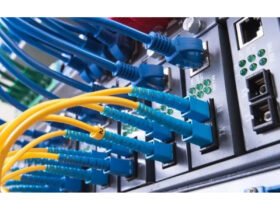Leasing a copier is a smart option for businesses looking to manage their printing and copying needs without a significant upfront investment. However, navigating the process requires a clear understanding of the terms, options, and best practices. This guide provides a detailed step-by-step tutorial to help you lease a copier that aligns with your business requirements.
Why Lease a Copier?
Leasing a copier offers financial flexibility, access to advanced technology, and included maintenance plans. Instead of bearing the full cost of purchasing a copier, leasing allows businesses to allocate funds for other priorities while still benefiting from reliable office equipment. Additionally, lease agreements often include services such as repairs, toner replacements, and software updates.
Step 1: Determine Your Business Needs
Before exploring leasing options, evaluate your printing and copying requirements. This ensures you choose a copier that matches your operational needs.
Questions to Consider:
- Volume: How many pages do you print or copy monthly? High-volume copiers are essential for large-scale operations, while smaller businesses may benefit from compact models.
- Features: Do you need additional functionalities like scanning, faxing, or duplex printing? Identify must-have features for your workflow.
- Color vs. Monochrome: Decide whether you require color printing or if black-and-white printing suffices.
- Connectivity: Ensure compatibility with your office network, including wireless printing and cloud integration.
By answering these questions, you’ll create a profile of the ideal copier for your business.
Step 2: Understand Copier Leasing Options
Leasing contracts vary, so it’s essential to familiarize yourself with common terms and options.
Types of Leases:
- Fair Market Value (FMV) Lease: This option allows you to return the copier at the end of the lease, renew the lease, or purchase the copier at its fair market value. FMV leases typically have lower monthly payments.
- Dollar Buyout Lease: With this lease, you own the copier for a nominal fee (usually $1) at the end of the term. This option is ideal for businesses that plan to keep the copier long-term.
Lease Length:
Leases typically range from 12 to 60 months. Shorter terms allow for quicker upgrades to new technology, while longer terms often result in lower monthly payments.
Step 3: Research and Compare Providers
Choosing the right provider is crucial for a smooth leasing experience. Take time to research companies and compare their offerings.
Tips for Evaluating Providers:
- Reputation: Check online reviews, testimonials, and BBB ratings to gauge credibility.
- Service Packages: Look for providers that include maintenance, repairs, and toner replacements in their contracts.
- Flexibility: Ensure the provider offers customizable lease terms to fit your needs.
- Transparency: Avoid providers with unclear pricing or hidden fees.
Popular providers like Xerox, Ricoh, Canon, and Konica Minolta are known for their reliable equipment and service agreements.
Step 4: Request and Compare Quotes
Reach out to multiple providers to request detailed quotes. A comprehensive quote should include:
- Equipment model and specifications
- Monthly lease cost
- Maintenance and service fees
- Additional charges, such as overage fees for exceeding page limits
Comparing quotes side-by-side helps identify the best value for your budget.
Step 5: Review the Lease Agreement
Carefully review the lease agreement before signing. Pay attention to:
- Terms and Conditions: Understand your obligations, including early termination policies and end-of-lease options.
- Maintenance Plans: Confirm what is covered under the maintenance agreement.
- Hidden Fees: Look for additional charges, such as setup fees or penalties for exceeding usage limits.
- Ownership Terms: Clarify whether the copier will be returned, renewed, or purchased at the end of the lease.
If necessary, consult a legal or financial expert to ensure you fully understand the agreement.

Step 6: Prepare for Delivery and Installation
Once the lease is finalized, coordinate with the provider to schedule delivery and installation. Ensure your office is ready to accommodate the copier by:
- Verifying the space meets the copier’s size and power requirements
- Setting up network connectivity for seamless integration
- Assigning an employee to oversee the setup process and coordinate with the provider’s technician
Step 7: Monitor Usage and Maintain the Copier
Proper maintenance is essential to maximize the value of your lease. Many lease agreements include service plans, but it’s important to follow best practices to keep the copier in optimal condition.
Tips for Maintenance:
- Regularly clean the copier to prevent dust buildup.
- Use high-quality paper and toner to avoid jams and damage.
- Monitor usage to ensure you stay within monthly limits and avoid overage fees.
- Schedule routine maintenance with the provider to address wear and tear.
Step 8: Plan for the End of the Lease
As the lease term approaches its end, decide how to proceed based on your business needs.
End-of-Lease Options:
- Return the Copier: If the copier no longer meets your requirements, return it and explore new leasing options.
- Renew the Lease: Extend the lease term to continue using the equipment.
- Purchase the Copier: Opt to buy the copier if it remains a valuable asset for your business.
Notify your provider in advance to ensure a smooth transition.
Common Mistakes to Avoid When Leasing a Copier
- Failing to Assess Needs: Leasing a copier with features you don’t need can result in unnecessary expenses.
- Overlooking Hidden Costs: Carefully review the agreement to avoid unexpected charges.
- Choosing the Wrong Lease Term: A term that’s too short may lead to frequent upgrades, while a term that’s too long can lock you into outdated technology.
- Ignoring Service Quality: Ensure the provider has a responsive support team to address issues promptly.
Conclusion
Leasing a copier can be a cost-effective and practical solution for businesses, but it requires careful planning and research. By following this step-by-step guide, you can confidently navigate the leasing process, choose a reliable provider, and secure a copier that meets your business needs. With the right approach, leasing becomes a valuable investment that enhances productivity and streamlines operations.










